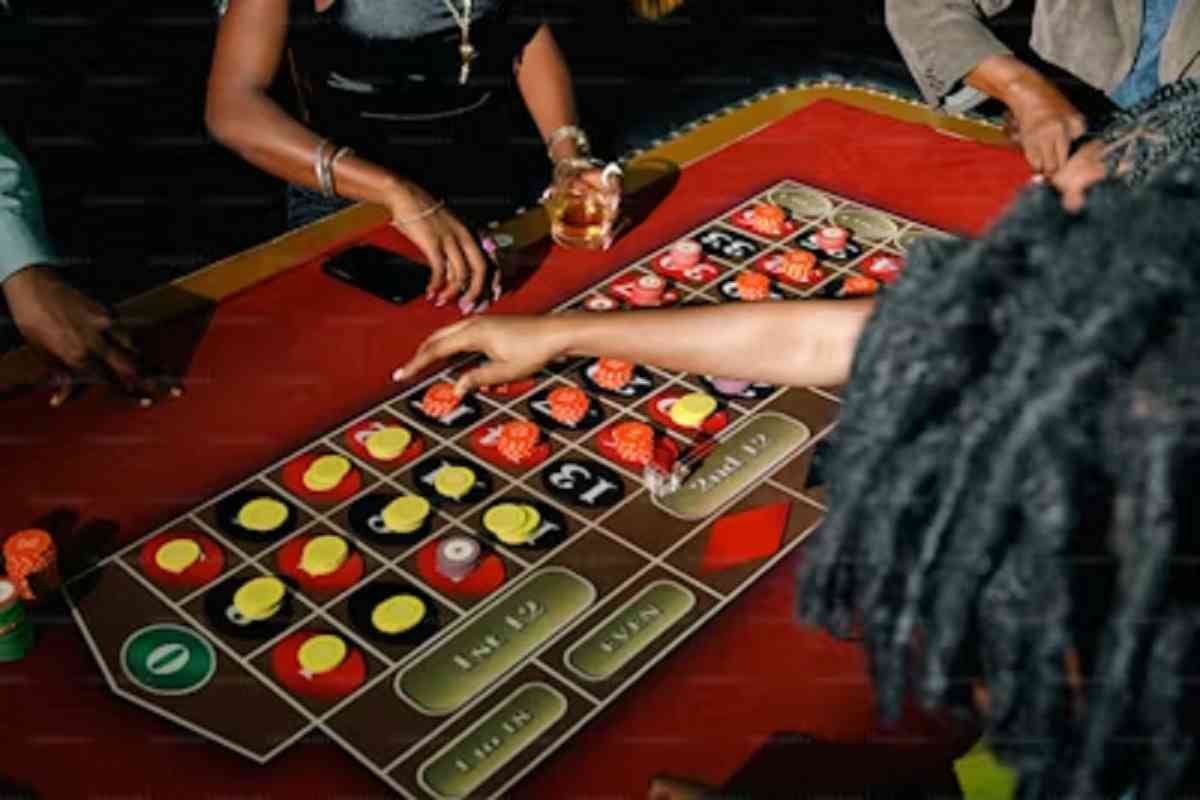Blackjack is one of the most popular casino games worldwide, known for its blend of skill and chance. For beginners, understanding the nuances of the game can be overwhelming. However, blackjack strategy charts serve as valuable tools to enhance gameplay. In this guide, we will explore the fundamentals of blackjack, the significance of strategy charts, and effective ways to implement them in your gaming sessions.
Understanding the Basics of Blackjack
Before diving into strategy, it’s essential to grasp the basic rules of blackjack. The objective of the game is to beat the dealer’s hand without exceeding a total of 21. Players are dealt two cards and can choose to either ‘hit’ (take another card) or ‘stand’ (keep their current hand).
Each card has a specific value: cards 2 through 10 are worth their number, face cards (Jack, Queen, King) have a value of 10, and Aces can be either 1 or 11, depending on which value is more favorable for the player. Understanding these basics sets a solid foundation for better gameplay.
In addition to the basic rules, players should also be aware of the concept of ‘blackjack’ itself, which occurs when the initial two cards dealt to a player total 21, typically consisting of an Ace and a 10-value card. This hand usually pays out at 3:2, making it one of the most sought-after outcomes in the game. Furthermore, players should familiarize themselves with the dealer’s rules, which often dictate that the dealer must hit until reaching a minimum of 17. This knowledge can significantly influence a player’s decision-making during the game.
Another important aspect to consider is the betting structure. Players can place various types of bets, including the initial bet and optional side bets, which can add an extra layer of excitement to the game. Side bets might include options like ‘Perfect Pairs’ or ’21+3′, where players wager on the possibility of certain card combinations. Understanding the implications of these bets and how they can affect overall winnings is crucial for anyone looking to enhance their blackjack experience.
The Importance of Strategy Charts in Gameplay
Strategy charts are invaluable in helping players make informed decisions during gameplay. These charts outline the best possible moves based on the player’s total and the dealer’s visible card. By using a strategy chart, beginners can significantly reduce the house edge and increase their chances of winning.
Moreover, strategies outlined in these charts are based on extensive statistical research. They provide a guideline that can make the difference between a winning and losing hand. For new players, having a strategy chart on hand can alleviate confusion and improve confidence during play.
In addition to aiding decision-making, strategy charts serve as a valuable educational tool. They help players understand the underlying principles of the game, such as the importance of card counting and probability. By familiarizing themselves with these concepts, players can develop a deeper appreciation for the game and enhance their overall experience. This knowledge not only empowers them to make better decisions but also fosters a sense of camaraderie with fellow players who share similar interests in mastering the game.
Furthermore, strategy charts can be customized for different variations of the game, allowing players to adapt their approach based on specific rules and conditions. For instance, a player might encounter variations in blackjack that allow for different splitting or doubling down rules. Having access to a tailored strategy chart ensures that players can optimize their gameplay regardless of the specific nuances of the game they are playing. This adaptability not only enhances their skills but also keeps the gameplay dynamic and engaging, encouraging players to explore new strategies and refine their techniques over time.
How to Read and Interpret Blackjack Strategy Charts
Reading a blackjack strategy chart may seem daunting at first, but with practice, it becomes second nature. The charts are typically formatted in a table that outlines player totals on one axis and dealer upcards on the other. Each cell within the table will indicate whether to ‘hit’, ‘stand’, ‘double down’, or ‘split’.
For instance, if you have a hand total of 16 and the dealer shows a 10, the chart may advise you to surrender or hit. Familiarizing yourself with the chart before heading to the table can help you quickly make decisions during gameplay.
Understanding the rationale behind the recommendations in the strategy chart is equally important. The basic strategy is derived from mathematical probabilities and the concept of expected value, which helps players minimize the house edge. For example, the chart suggests hitting on a soft 17 (an Ace and a 6) against a dealer’s 10 because the potential to improve your hand outweighs the risk of busting. This strategic approach not only enhances your chances of winning but also contributes to a more enjoyable gaming experience by reducing the stress of decision-making under pressure.
Moreover, it’s essential to remember that blackjack strategy charts can vary slightly based on the specific rules of the game being played, such as the number of decks in use or whether the dealer hits or stands on a soft 17. Therefore, always ensure that the chart you are using aligns with the rules of the table you are playing at. As you gain more experience, you may even find that you can recall many of the strategies without needing to reference the chart, allowing you to focus more on the game and your opponents rather than just the numbers.
Common Mistakes Beginners Make with Strategy Charts
Even with strategy charts, beginners can still make mistakes that hinder their success. One common error is disregarding the chart when emotions come into play. Players might feel tempted to hit or stand based on gut feelings rather than the statistical data provided by the chart.
Additionally, some new players might misunderstand the chart’s recommendations and apply them inconsistently. It’s important to take the time to fully understand how to interpret the strategies before your first game. Misapplication can lead to losses that could have been avoided with the correct strategy.
Basic Strategy vs. Advanced Strategies
The basic strategy serves as an excellent starting point for beginners, providing sound advice based on a wide array of expected outcomes. However, as players gain experience and proficiency, they may wish to explore advanced strategies such as card counting or shuffle tracking.
Card counting involves keeping track of the high and low cards dealt to gauge the remaining deck’s composition. This method requires practice and concentration but can significantly shift the odds in a player’s favor. However, be aware that many casinos monitor for this strategy and may take measures against players utilizing it.
The Role of House Edge in Blackjack
The house edge is the casino’s advantage over the players, built into the game. In blackjack, this edge varies depending on the rules of the specific game and players’ adherence to optimal strategy. The average house edge in blackjack can be as low as 0.5% when using the basic strategy correctly.
Understanding and mitigating the house edge is crucial for any player. By utilizing strategy charts effectively, you can minimize your losses and maximize your potential for wins. It’s essential to remember that while the house will always have an advantage, knowledge and strategy can greatly balance the scales.
Tips for Practicing with Strategy Charts
Practice is key to mastering blackjack strategy charts. Utilizing online simulators or apps that mimic real blackjack gameplay allows players to test their skill without the financial risk. Many of these platforms provide verbal feedback on players’ decisions compared to the strategy charts.
Another effective practice method is to utilize practice sheets, which can be printed and referred to during informal games with friends or at home. The more familiar you become with the strategies, the more intuitive your gameplay will be during real games.
Adapting Your Strategy for Different Game Variants
Blackjack comes in various exciting variants, each with unique rules that may affect strategy. Popular versions include European Blackjack, Spanish 21, and Pontoon. Each variant can have different house rules regarding the dealer’s actions, available splits, and double downs.
It’s essential to adjust your strategy chart according to the specific rules of the game variant you are playing. A solid understanding of how these variants play can influence your decision-making process and let you fully leverage your skills.
Frequently Asked Questions About Blackjack Strategy
Many players have questions about the practical application of blackjack strategy charts. Here are a few commonly asked queries:
- Do I need to memorize the strategy chart? While it helps to memorize it, having the chart accessible until you are comfortable with it is advisable.
- Can I use strategy charts in real casino games? Yes, many players refer to strategy charts even while playing in a casino, although it’s essential to do so discreetly.
- What if my playing style doesn’t match the chart’s recommendations? Everyone has a unique style; however, the chart is designed based on mathematical probabilities. Deviating too often may increase your chances of loss.
Resources for Further Learning and Improvement
There are several resources available for players looking to deepen their knowledge of blackjack strategies and gameplay. Books on blackjack strategies, online forums, and video tutorials can provide valuable insight and different perspectives on the game.
Websites dedicated to blackjack education often feature simulations and interactive exercises to improve your skills further. Additionally, many casinos offer classes where new players can learn the game’s nuances in a supportive environment.
With dedication and practice, you can harness the power of blackjack strategy charts to enhance your gaming experience and potentially increase your winnings.









